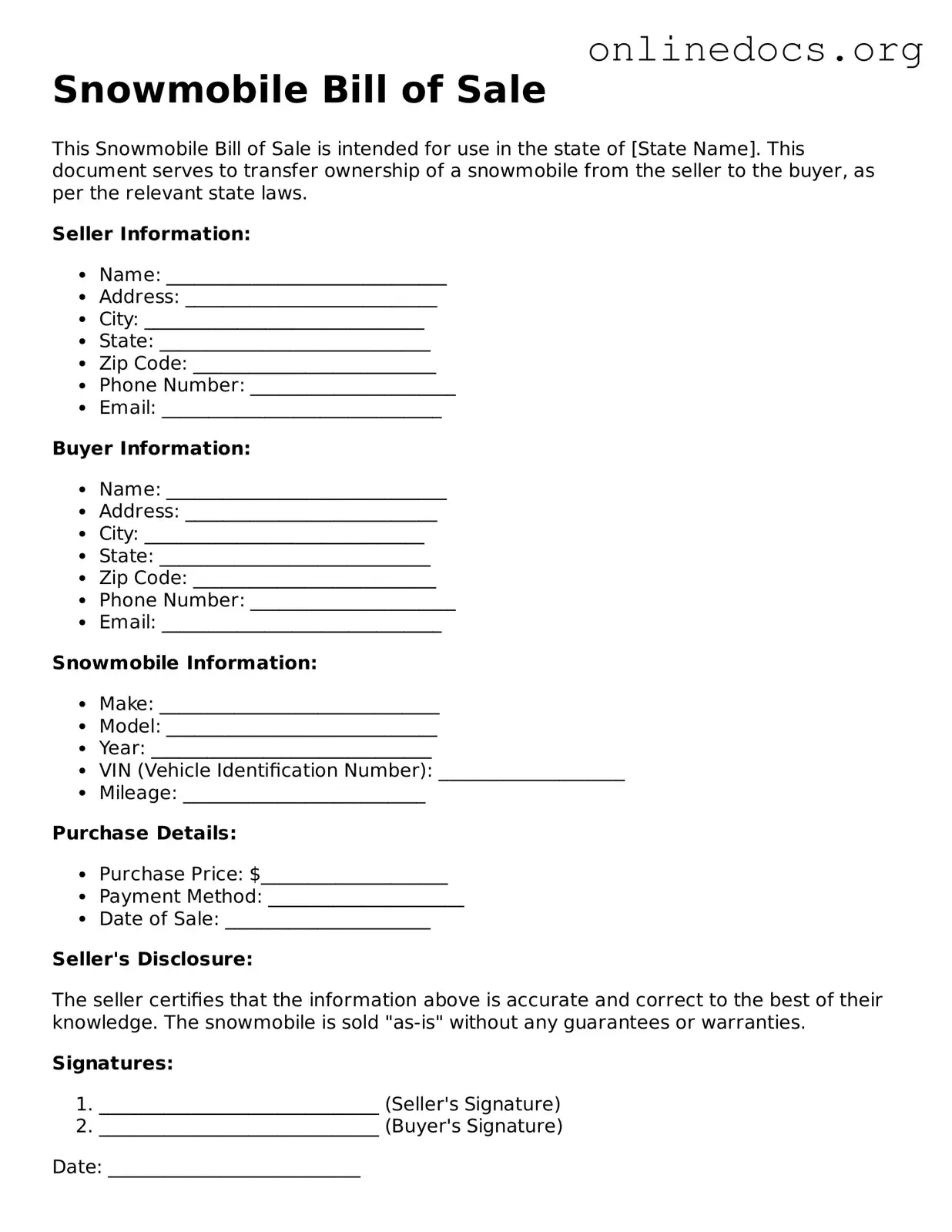The Snowmobile Bill of Sale form is similar to a Vehicle Bill of Sale. Both documents serve as proof of transfer of ownership from the seller to the buyer. They include essential details such as the names of both parties, the purchase price, and a description of the vehicle or snowmobile. This ensures that both parties have a clear understanding of the transaction, which can help prevent disputes in the future.
Another document that resembles the Snowmobile Bill of Sale is the Motorcycle Bill of Sale. Like the snowmobile version, this form outlines the sale of a motorized vehicle. It includes information about the buyer and seller, vehicle identification numbers, and any warranties or conditions related to the sale. This document is crucial for registering the motorcycle with the appropriate authorities and ensuring that the transaction is legally recognized.
The Boat Bill of Sale is also comparable to the Snowmobile Bill of Sale. Both documents facilitate the transfer of ownership for recreational vehicles. They typically include similar details, such as the hull identification number for boats and the serial number for snowmobiles. The clarity provided by these forms helps protect both buyers and sellers in their respective transactions.
A Trailer Bill of Sale shares similarities with the Snowmobile Bill of Sale as well. Both forms document the sale of a vehicle that is not driven on its own power. They detail the specifics of the trailer, including its make, model, and identification numbers. This documentation is vital for registering the trailer and ensuring that ownership is legally transferred.
The ATV Bill of Sale is another document that mirrors the Snowmobile Bill of Sale. Both forms are used for off-road vehicles and include similar information about the buyer, seller, and vehicle. They help establish a clear record of the transaction, which is important for registration and potential future sales.
In the realm of property leasing, understanding the importance of a well-drafted agreement is crucial, much like how documentation is important for vehicle sales. The California Lease Agreement form serves to clarify the terms between landlords and tenants, ensuring both parties know their rights and obligations. For those looking to lease a property, it is advisable to utilize resources like fillpdf-forms.com/ to facilitate the completion of this essential legal document.
In addition, the Personal Watercraft Bill of Sale is akin to the Snowmobile Bill of Sale. Both documents outline the sale of recreational vehicles that require registration. They include pertinent details such as the make, model, and identification numbers, ensuring that both parties are protected in the transaction.
The Aircraft Bill of Sale is also similar, though it pertains to a different type of vehicle. Like the Snowmobile Bill of Sale, this document serves to transfer ownership and includes details about the buyer, seller, and aircraft specifics. The comprehensive nature of these forms helps to facilitate smooth transactions in both aviation and recreational vehicle markets.
Finally, the General Bill of Sale can be compared to the Snowmobile Bill of Sale. While it is broader in scope and can be used for various types of goods, it shares the fundamental purpose of documenting the transfer of ownership. Both documents provide essential information about the parties involved and the item being sold, serving as a safeguard against potential disputes.
